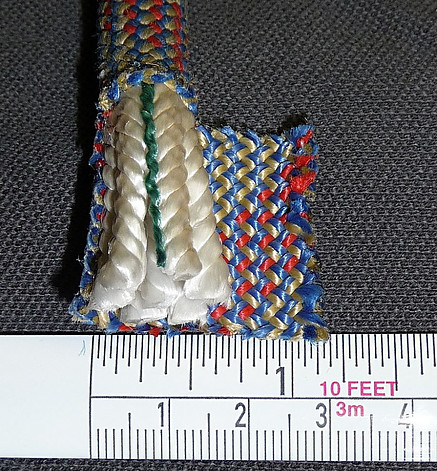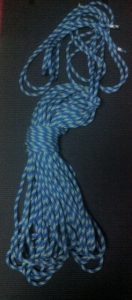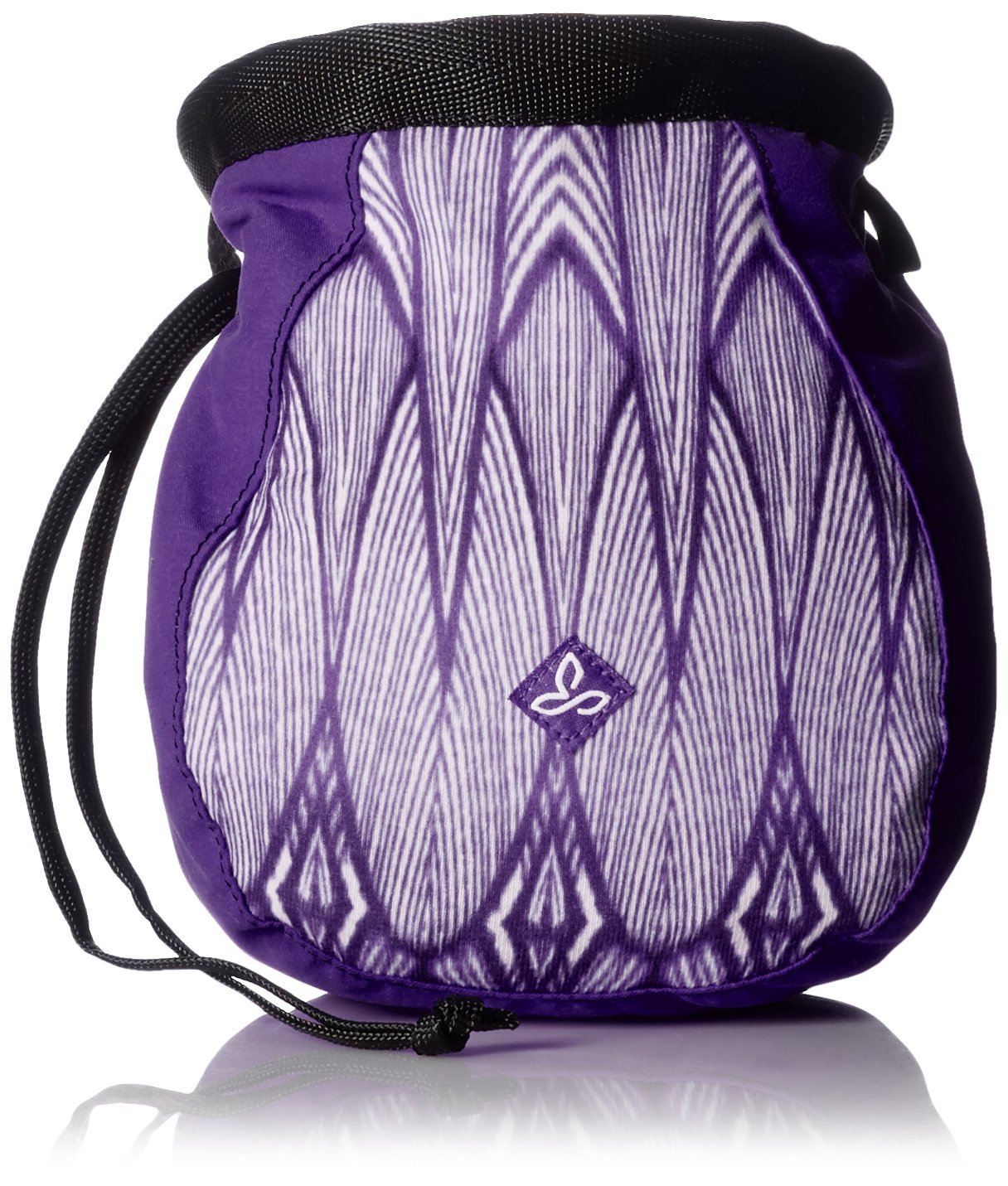Are you ready to lead climb? Yay! It’s an amazing experience yet it can get scary if you allow your imagination to run away with you. As long as you have the right equipment, secure backup system, and practice safety procedures, you will have fun and climb safely. One of the safety equipment that you will need for rock climbing is a dynamic rope.
If you are pretty new to lead climbing and wondering what is the best rope for rock climbing to purchase, you have come to the right place. In this article, we will discuss specifically dynamic rope for rock climbing single pitch indoor or outdoor.
For the dynamic rope, there are three categories: single, half, and twin ropes. I will focus primarily on the single ropes which is the most often used and simpler for trad (traditional), sport, big-wall, and top-roping. I will save half and twin ropes for another article.
The single rope is designed to be used by itself and not with another rope. It comes with different diameters and lengths and generally easier to handle than the two-rope systems. The single ropes are usually marked with a circle 1 on each end of the rope.
As the owner of this website, I tracked down special deals for some products or services mentioned herein. As an Amazon Associate, I earn from qualifying purchases. When you use the link from this page to make a purchase, I may receive a small commission to support this website, and you may receive a great bargain – Full Disclosure.
What Type of Material is The Dynamic Rope?
Dynamic rope is one type of rope that is best to use for rock climbing because of its ability to stretch and support multiple falls. The stretching helps absorb your fall and cushion the shock load. You may come across the static rope as well. It could be used but primarily for search and rescue in cave and caverns or any height related work. The constructions for dynamic and static ropes are different and they are used for different purposes. We will focus on the dynamic rope so make sure to look for the dynamic rope when you do your research for rock climbing.
The most common dynamic ropes are kernmantle which means they are constructed with an interior core protected by a woven exterior sheath. This is designed to optimize strength, durability, and flexibility. The core is a series of hundreds of nylon strands that provide most of the rope strength. The sheath outside is woven to protect the core from abrasion during use.
What Size to Choose From?
An average single pitch for rock climbing outdoor is about 150 feet. A single pitch is the size or length of an average climbing route. Anything higher is considered to be multi-pitch. The most common lengths are 50 meters (164 ft), 60 meters (197 ft), or 70 meters (230 ft). We bought ourselves a 60-meter rope for climbing outdoor. It’s better to have longer rope than shorter rope.
For indoor, my rock gym in Orlando has about 30 to 40 feet tall walls, so I would cut my 60-meter rope in half. The 30-meter rope is good for my indoor gym. My son would use the other rope or it becomes our backup rope. Find out what size wall for your rock gym and that would help you decide how long a rope you would need. By the way, I asked the staff at my gym to help me cut the rope. They have the equipment to do it properly. Don’t cut the rope yourself. It is not safe if you do not know what you are doing.
As far as the thickness or diameter of the rope, they are generally between 8.3mm and 11.5mm and use for different purposes. For top-roping or leading indoor, rope with a diameter of 10mm and higher is more durable and lasts longer. You can use it day in and day out training and supporting more falls. It is also good for sport climbing outdoor as well.
For trad (traditional), multi-pitches, and more experienced climbers, they prefer a skinnier rope with a diameter from 9.4 and 9.9 for lighter and long-distance hauling such as multi-pitches climbing. Keep in mind that the skinnier the rope the less durable and require more skill to belay safely. Also, be aware if you are using an assisted braking devices such as the Grigri, the rope diameter needs to be between 9.4 to 10.3mm thick. Anything skinnier or thicker will be hard to handle by the Grigri.
So generally, if you plan to use your rope primarily for gym usage, look into a rope with a diameter of 10.1 and a short 40 meters would do well for everyday usage in an average gym. However, this length may not be long enough for outdoor climbing. Don’t forget to check with your gym climbing wall height. Some gym will require a 60-meter rope such as ProjectRocks in southern Florida.
A good 9.5 to 9.9 mm rope is a good range as it is light enough and durable enough for all-around outdoor climbing. However, I would totally look at the thicker diameter to start out as I gain more experience leading indoor and outdoor.
Special Features to Look Out For
Dry Treated Rope – The dry treated rope reduces water absorption, abrasion resistance, and not as easy to collect dirt. It generally lasts longer. The material is made of the dry core, dry sheath, or both which offer the most moisture protection. With the extra perk, the dry treated rope is more expensive than a regular dynamic rope.
When would you use a dry treated rope? Consider when you are trad or multi-pitch climbing, ice climbing, or mountaineering you may encounter rain, snow, or ice. When the rope gets wet, it gets heavier and less effective to withstand the forces of a fall. Also, when the weather is cold and below 32 degrees F, the absorbed water in the rope will freeze. The rope will be stiff and unmanageable. The dry treated rope would definitely come in handy.
Regular climbing in the gym, top-roping, or sport climbing outdoor will not need the special treatment.
Middle Mark: Most ropes include a middle mark. Black dye is often used to help identify the middle of the rope. It is essential for rappelling to identify the middle of the rope.
Bicolor: Some ropes are bicolor. There is a change in the weave pattern to mark two halves of the rope 
End Warning Marks: Some ropes include a marking such as thread or black dye to show that the end of rope is near. This is helpful for lowering a climber or rappelling.
Safety UIAA Rating
Always check the rope that you are buying to see if it passes the UIAA (The Union Internationale des Associations d’Alpinisme) safety standard tests. The packaging for the dynamic ropes should list the test results including fall rating, static elongation, dynamic elongation, and impact force.
According to Wikipedia.org, the force rating is often misunderstood by climbers because the climbing gears are usually rated by the breaking strength of the material. The higher rating is generally wanted for the other gear. However, for the dynamic ropes, a lower rating is desired for a soft catch which would less likely to injure the climber or break / dislodge the protection. Also, In general, the thicker ropes are more durable and stronger and have a higher fall rating.
To check your own rope, always run fingers through that there’s no tear in it. Check your rope in a regular basis.
Conclusion
Buying a good rope is an important purchase. Safety should always be our number one concern. In general for beginners in lead climbing, I would look for a simple 10.1 diameter dynamic single rope with the length that best fits your home rock gym. In my case, I use a 30-meter rope. It is durable and should be great for several years or more depending on my usage.
==> Check out Dynamic Climbing Rope Reviews – what works best for you? <==
Ropes do get thicker over time because of the over usage and the humidity factor in the air. As the rope gets thicker, there would be more friction making it harder to belay. It may be a good time to buy a new rope. Also, if you notice that there is a small tear in your rope, it is time to replace it. If there are any doubts, it is good to replace it. Remember safety is number one. You don’t want to discover that the rope will break as you are climbing 30 feet off the ground. In the last 5 years of my climbing career, I have replaced two 30 meter ropes. That is because we have three climbers using it pretty often.
I hope you find this article useful for your research on ropes. Please feel free to leave me your questions, comments, or feedback on your experiences with climbing ropes. I love to hear your perspective.







